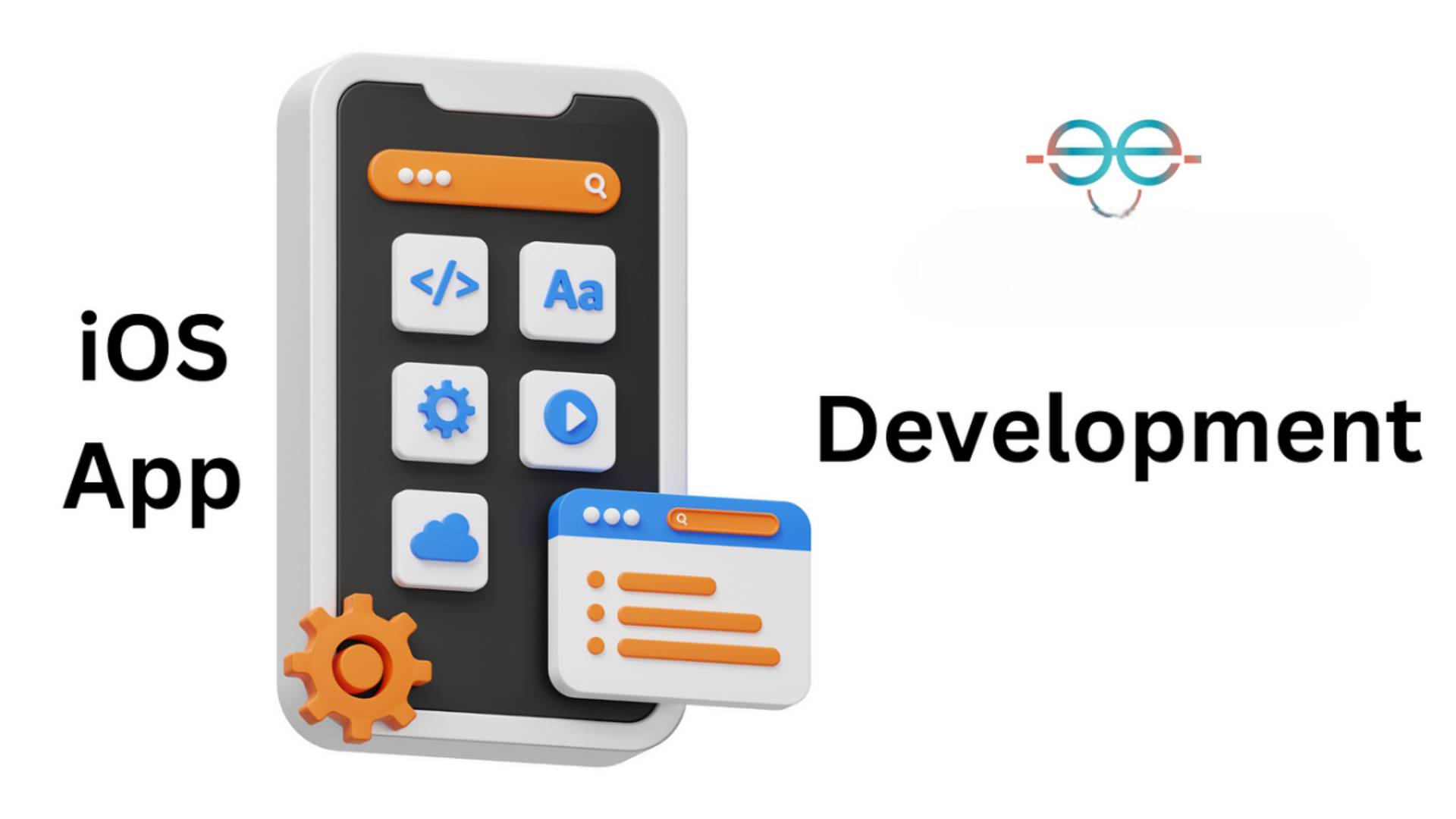How to Build a Successful iOS App from Scratch
Mobile applications have evolved into a crucial element of our vitality in the current digital generation. The iOS platform presents app builders with an incredible possibility to attain a large target market due to its user-pleasant layout and robust ecosystem. But creating a great iOS app from scratch calls for thorough planning, close attention to detail, and a thorough comprehension of the development procedure.

Understanding the Target Audience
Understanding your iOS app’s target market is essential before starting the app development process. Describe the target audience for your app, including their demographics, tastes, and problems. Throughout the development and marketing phases, this information will help you make decisions.
Defining the App’s Purpose and Features
The goal and essential components of your iOS app should be clearly stated. Determine the issue it resolves or the benefit it offers users. This clarity will aid in your concentration while you work on developing an engaging app that fulfills user needs.
Conducting Market Research
Investigate the market for iOS apps now available to find possible rivals, related apps, and trends. Examine their advantages and disadvantages to identify areas where they can differ. You may improve your app’s unique selling features with the help of this research, which will give you useful information.
Creating a Wireframe and User Interface Design
Create a wireframe that depicts the organization and navigation of your app. Create an interface that is simple to use and visually appealing by utilizing user experience (UX) principles. Use prototyping tools to demonstrate the app’s features and collect user feedback.
Choosing the Right Development Approach
Select a development strategy based on the project’s complexity, cost, and timeline. You have the option of adopting cross-platform frameworks like React Native or Flutter, or you can choose native development using Swift and Xcode. To make a knowledgeable choice, weigh the benefits and downsides of every possibility.
Writing Clean and Efficient Code
Concentrate on creating readable and effective code during the development stage. To ensure scalability, maintainability, and potential updates, adhere to industry best practices and coding standards. To speed up development and improve code reuse, use frameworks and modular architectures.
Testing and Debugging
Test your iOS app thoroughly on a variety of devices and iOS versions to find and repair any bugs or performance problems. To guarantee a seamless and error-free user experience, employ automated testing tools and real-user testing. Debug and improve the performance of the app frequently for the best outcomes.
App Store Submission and Optimization
As you prepare to publish your software to the App Store, abide by Apple’s policies. To increase discoverability and conversion rates, optimize your app’s metadata, including the title, keywords, description, and screenshots. Make positive your app conforms to all relevant laws.
Implementing App Analytics
Track user activity, engagement, and key performance indicators (KPIs) using app analytics solutions. Making data-driven decisions and enhancing the functionality of the app will be made possible by analyzing statistics on user retention, conversion rates, and feature usage.
Continuous Improvement and Updates
The process of creating an effective iOS application never ends. Keep track of customer opinions and reviews to spot areas that could use improvement. Release new features and upgrades frequently to keep users interested and meet their changing needs. Keep up with the most recent iOS platform changes and make use of fresh tools to expand the functionality of your app.
Monetization Strategies
Investigate several revenue techniques for your iOS app. This could involve in-app purchases, subscriptions, marketing, or a mix of these. Consider your app’s features, your target market, and market trends while choosing the best monetization strategy.
Promoting and Marketing the App
Create a thorough marketing strategy to promote your iOS app and encourage downloads. To effectively attain your goal audience, use several channels, consisting of social media, content marketing, influencer collaborations, and app shop optimization (ASO) strategies.
Gathering User Feedback and Making Improvements
Reviewing and rating your app should be encouraged by users. Pay attention to their problems and suggestions, then implement the appropriate changes in light of their input. Engaging with your user base encourages loyalty and aids in the gradual improvement of your software.
Ensuring App Security
Pay utmost attention to app security to protect user data and maintain user trust. Implement secure authentication mechanisms, encrypt sensitive information, and follow secure coding practices. Regularly update your app to address any security vulnerabilities or emerging threats.
The Importance of User Feedback
The success of your iOS app depends on user input. Encourage customers to leave reviews and feedback, since this data can help you spot potential areas for improvement and fix bugs. You may design a more gratifying and user-centric experience by paying attention to your consumers’ feedback and adopting it.
Enhancing User Engagement
For your iOS app to be successful, users must be engaged. Include elements that motivate users to interact with the app’s content and stay longer within it. This could incorporate game-like components, tailored advice, social sharing possibilities, or interactive elements that encourage user engagement.
Utilizing Push Notifications
Users can be re-engaged and saved updated on upgrades, new features, and promotional gives with the useful resource of push notifications. To avoid overloading or irritating consumers, push notifications must be used carefully. Make the alerts more useful and relevant by customizing them depending on user choices and activity.
Optimizing App Performance
To satisfy users, an app must be responsive and slick. Reduce the amount of time your software takes to load, eliminate freezes or crashes, and manage memory utilization to improve performance. Analyze performance indicators regularly to spot bottlenecks and potential areas for improvement.
Implementing Social Sharing
The exposure and reach of your iOS app can be greatly increased by integrating social sharing tools. Make it simple for users to share content, accomplishments, or app-related updates on well-known social media sites. This may have a viral impact and naturally draw in more users.
Building a Community
To assist create a feel of the network around your product, create forums, chat rooms, or unique social media channels in which clients can engage with each other and offer support. Building a community increases user engagement and cultivates a network of devoted users who will promote your software.
The Power of App Store Optimization (ASO)
Utilize ASO tactics to improve your iOS app’s listing for maximum visibility in the App Store. To improve the app’s placement in search results, the title, description, keywords, and screenshots must all be optimized. Be mindful of the app’s symbol and make a captivating visual depiction to draw users in.
Tracking and Analyzing User Behavior
Utilize powerful analytics programs to monitor user behavior in your iOS app. To learn more about user preferences and habits, keep an eye on user flows, conversion rates, and feature usage. Use this data to improve the user experience, hone the features of your app, and foster continued development.
Custom Massage: Get Access Now
I have excellent news for you if you’re prepared to move on with creating a successful iOS app from the start. You may obtain unique access to a thorough iOS app development guide that offers in-depth insights, useful advice, and priceless tools to support you through the process. This route will offer you the understanding and gear required to produce an advanced iOS app that stands out from the crowd.
Gathering User Feedback and Making Improvements
After you release your iOS app, actively look for customer comments and ratings. Encourage customers to submit their feedback, ideas, and bug reports. Pay close attention to user feedback on the App Store and other platforms, and fix any concerns or problems right away. User feedback is crucial for pinpointing flaws and making sure your app lives up to consumers’ expectations.
Monitor app analytics in addition to user feedback to learn about user engagement, behavior, and key performance indicators (KPIs). Analyze information about feature usage trends, conversion rates, and user retention rates. You can use this information to prioritize updates and enhancements and make data-driven decisions.
Regularly provide updates to your application to enhance its functionality, usability, and performance. Depending on user feedback and market trends, add new features. To stay competitive in the always-changing mobile app market, constantly improve your app based on user input and new technology.
Mastering App Development Basics
You may discover the tricks of the iOS app creation trade with the help of this comprehensive guide on how to build a profitable iOS app from the beginning. Whatever your level of proficiency, this bundle will equip you with the skills you need to create ground-breaking software. Learn the core ideas and methods that serve as the foundation for each great iOS application.
Learn the requirements of the Swift programming language.
Explore Swift, a potent and user-friendly programming language for iOS development. Swift provides a seamless experience for building effective and reliable iOS apps because of its clear syntax and wide range of capabilities. You will circulate from a novice to an intermediate degree via our step-by-step lectures and hands-on exercises, supplying you with the understanding and talents you want to write down ideal code that helps the capability of your app.
Harness the power of the Xcode IDE.
Investigate the features of Xcode, the integrated development environment created especially for the creation of iOS apps. To simplify your improvement method and raise productivity, discover ways to make the most of the several gears and capabilities that Xcode provides. To make the most of this critical tool, we will guide you through each element of Xcode, from consumer interface layout to checking out and debugging.
Designing a Visually Stunning User Interface
Your iOS app can have a compelling user experience that is immersive and visually appealing if you apply our in-depth guide to designing a great user interface. Recognize the significance of simple navigation, appealing visuals, and interactive elements that entice consumers to return for more. Make your software into a piece of art by letting your imagination run wild.
Implement user-centered design principles.
Adopting user-centered design concepts will put your app’s users at the center of the design process. Consider their needs, preferences, and expectations while designing an interface that is simple to use. You’ll learn how to perform user research, develop user personas, and design user flows under the direction of our industry professionals.
Utilize iOS design guidelines and trends.
Utilize the newest iOS design standards and trends in your app to stay ahead of the curve. Learn how to use Apple’s Human Interface Guidelines to produce an interface that adheres to the iOS ecosystem while also being visually appealing. To give your app a contemporary and professional look, educate yourself on the newest typeface, color, and design trends.
Maximizing App Performance and User Engagement
Enhance your app’s performance and deepen user engagement. Learn the techniques and approaches the top iOS programmers employ to enhance the responsiveness, performance, and usability of their apps. This part will make your program a top performer by optimizing performance and incorporating strong features.
Optimize for speed and efficiency.
Learn how to enhance the performance of your app to ensure that it operates without a hitch and responds to user inputs as rapidly as feasible. Investigate techniques like memory management, caching, and code optimization to speed up and improve your project. You’ll discover how to design a smooth user experience that maintains users’ interest and satisfaction with our professional advice.
Integrate cutting-edge features and technologies.
By adding cutting-edge features and technology, your app will reach new heights. Learn how to use the most modern iOS capabilities, inclusive of augmented truth and device learning, to enhance the capabilities of your app and provide customers with a one-of-a-kind experience. With the help of our thorough advice, stay one step ahead of the competition and highlight the innovation of your software.
Conclusion
Building an iOS app from scratch involves a mix of technical proficiency, thoughtful planning, and efficient execution. You can build a solid foundation for the creation of your app and raise the possibility of its success by adhering to the comprehensive procedures provided in this article. Remember to identify your target market, specify the features and purposes of your app, carry out in-depth market research, develop clear and efficient code, do comprehensive testing, optimize for search engines, and effectively market your app.
Keep up with the most recent innovations and fashions in the iOS app development industry. New features and rules are continuously being added to Apple’s platform. By keeping up with these updates, you can make sure that your software is still competitive and meets customer expectations.


